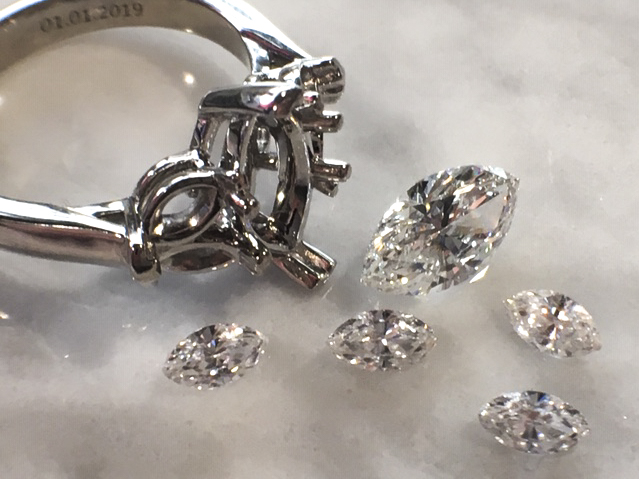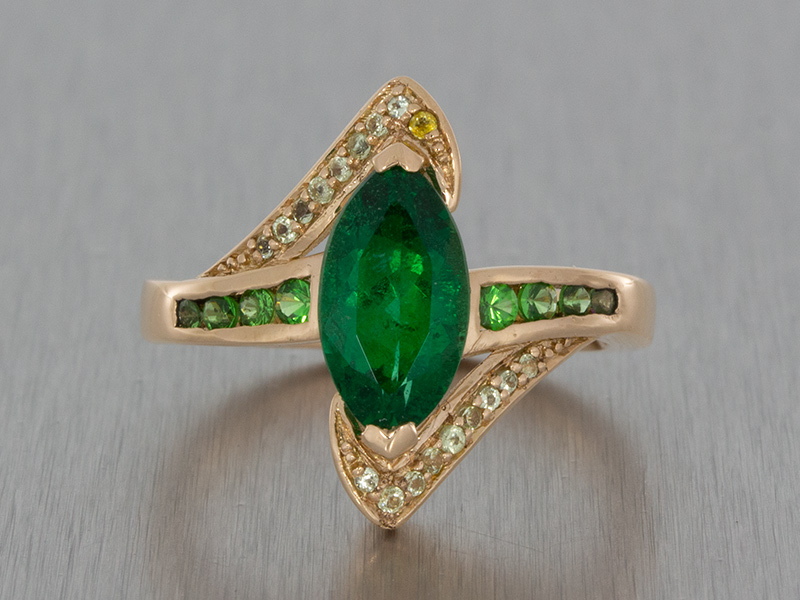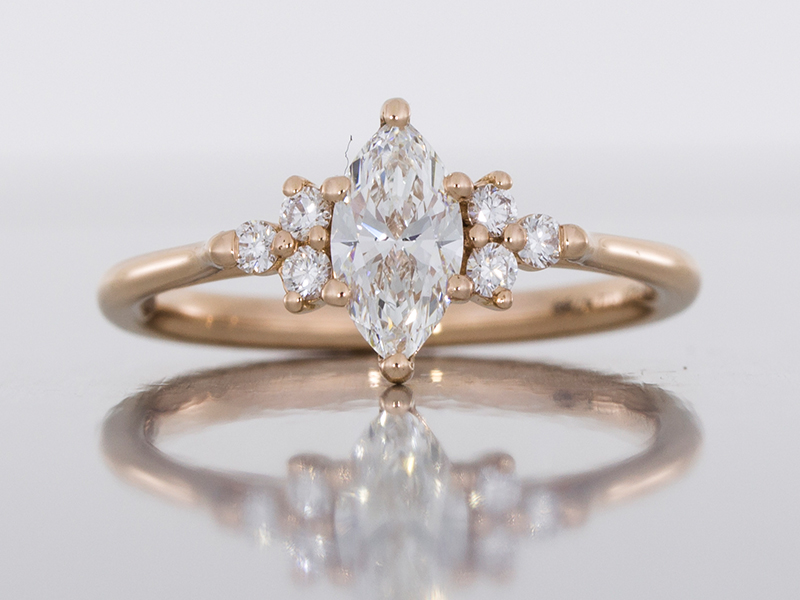Stone shape can be one of the biggest decisions when it comes to designing a custom engagement ring. Perhaps more than anything else, it influences the overall flow of your design. And it’s possibly for that reason that people either love or hate the marquise cut. It’s not the most popular choice amongst brides to be. But that is often part of the appeal for those who fall in love with this less common stone style.
So, if you’re considering a marquise cut stone for your custom engagement ring, what do you need to know?
Your Guide to Marquise Cut Custom Engagement Rings
What is a marquise cut stone?
So, let’s start with the basics. The marquise cut is characterised by an elongated oval-esque shape, with pointed ends. From above, it appears to be almost an oval-diamond hybrid. The cut is said to have originated around 1745, when King Louis XV commissioned a diamond that would resemble the smile of his mistress, the Marchioness Madame de Pompadour. Which adds a lovely bit of romance to the backstory.
The cut has changed slightly over the years in an aim to enhance the brilliance of the stones, but the basic design remains the same.
How can you use a marquise cut stone?
As you browse through the images in this blog, you’ll see the marquise cut stone used in various ways to create totally bespoke engagement rings. It can make an absolutely stunning centre stone. Or it can be used with equal effect as an accent, as part of a halo, or to create an unusual design – the marquise can perfectly replicate the petals of a flower, or even the wings of a butterfly. If you have something in mind, ask your designer how you can bring it to life.
What is the best setting for the marquise cut diamond?
The most common setting for marquise cut stones for custom engagement rings is the six-prong. This holds the stone securely in place without impairing its brilliance.
For more contemporary designs, the bezel setting is also popular. It does reduce the scintillation for the gem, but it holds it secure. And can look stunning in the right design.
For smaller stones, a four-prong setting can also work.
The pros and cons of the marquise cut stone for custom engagement rings
Pros:
- The marquise cut has almost 60 facets, this means that it scintillates beautifully.
- It’s totally different to the other stone cuts. So, coming up with an original design can be easier.
- It’s a versatile cut that can work in almost any style of ring – vintage, contemporary, even minimalist.
- The shape can make the wearer’s fingers look longer and slimmer.
- It’s a good cut for disguising flaws in the stone.
- And custom engagement rings employing marquise cut stones are usually character-packed.
Cons:
- The shape of the marquise cut stone can make it vulnerable to damage, even for diamonds. So, you need to consider your settings seriously.
- The stone also needs to be cut extremely well in order to avoid what are known as ‘bow tie’ markings.
At Durham Rose, we love working with marquise cut stones. Partly, because we don’t often get the chance. But mainly because they can look so beautiful in the right design. If you’re looking for a custom engagement ring with an obvious difference, the marquise cut is definitely worth considering.
To find out more about designing your own bespoke engagement ring, contact Durham Rose today.










